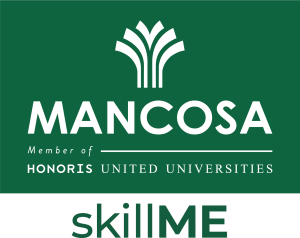
Wound care, often considered a routine aspect of medical treatment, is one of the most critical yet overlooked pillars of healthcare.
Whether it’s a diabetic foot ulcer, a post-surgical incision, or a trauma wound from a road accident, how a wound is managed can mean the difference between healing and harm, independence and disability, or even life and death.
In South Africa’s healthcare system, where limited resources, high trauma rates, and a heavy burden of chronic disease intersect, the need for proper wound care is especially urgent, which is where skillME’s Introduction to Wound Management comes in.
Every day, healthcare workers on the frontlines make split-second decisions about how to clean, dress, and monitor wounds, often in settings with limited access to specialists.
This blog unpacks why this type of care is far more than a basic skill. It’s a healthcare fundamental, deeply tied to outcomes, system efficiency, and patient dignity, from the realities of the current healthcare landscape to the pressing need for training and upskilling.
Present-day healthcare: an overview of the landscape
South Africa’s healthcare system is characterised by a distinct two-tier structure that influences the delivery of medical services nationwide.
Approximately 80% of the population relies on the public healthcare sector, while the remaining 20% access care through the private sector.
This division presents both challenges and opportunities in providing equitable and high-quality care, including in critical areas such as wound management.
The public sector
The public healthcare system is the backbone of medical services in South Africa, providing free or low-cost care to the majority of citizens. Clinics and public hospitals serve as the primary points of care, particularly for underserved and rural communities.
Despite its wide reach, the sector is burdened by resource constraints, including chronic understaffing, insufficient funding, and operational inefficiencies.
These issues often translate into long waiting times, limited availability of specialised care, and inconsistent quality, which directly affect patients with complex conditions such as chronic wounds or diabetic ulcers.
Notably, public healthcare is generally free at the point of use. However, some patients may still incur out-of-pocket expenses for specific medications or procedures.
The private sector
On the other side, South Africa’s private healthcare caters mainly to those who can afford private medical insurance or pay directly for services.
Private facilities typically offer more advanced infrastructure, shorter wait times, and a broader range of specialist services. This means better access to modern treatments, dedicated clinics, and advanced diagnostic tools.
However, these benefits come at a significant financial cost, making private healthcare inaccessible to the majority of South Africans.
Universal health coverage
To bridge these divides, the South African government is advancing the National Health Insurance (NHI) initiative – a landmark reform aimed at achieving universal health coverage.
The NHI intends to create a centralised insurance fund that will integrate both public and private healthcare providers, thereby improving access to quality services for all citizens, regardless of their income.
Successful NHI implementation holds particular promise for wound care, as it would standardise care protocols, increase funding for critical resources, and expand access to specialised services.
Given South Africa’s high burden of chronic diseases, injuries, and infections that often result in wounds, strengthening this type of care under the NHI could dramatically reduce complications, hospitalisations, and long-term disability.
5 Reasons wound care and management are fundamental to healthcare today
For nurses and healthcare workers, wound management and care are fundamental skills – ones that not only improve individual outcomes but also alleviate pressure on the healthcare system as a whole. Here are the key reasons it should be considered fundamental in healthcare.
1. High prevalence of chronic conditions
South Africa is seeing a rapid increase in non-communicable diseases (NCDs). As of 2024, 7.2% of adults in South Africa have diabetes.
Diabetes and other vascular conditions like hypertension can impair blood circulation and nerve function, making patients more susceptible to chronic wounds, especially foot ulcers.
Chronic wounds are slow to heal and highly prone to infection. Without proper care, they often lead to complications such as gangrene, sepsis, and amputations. Effective wound management helps to mitigate these risks and reduce the need for hospitalisation.
2. High prevalence of chronic conditions
From lacerations and burns to deep tissue trauma, injuries require immediate and ongoing wound care. Prompt treatment reduces the risk of infection and long-term disability, especially in overburdened emergency departments.
In rural clinics, having staff well-trained in wound cleaning, suturing, and dressing can save lives and reduce referrals to higher-level facilities.
3. High prevalence of chronic conditions
With approximately 7.8 million people living with HIV in South Africa and high TB co-infection rates, wound healing becomes more complicated. These patients are immunocompromised, which leads to slower healing times and a greater risk of wound-related infections.
Tailoring care for these vulnerable populations, including infection control, antimicrobial dressings, and nutritional support, is essential. It also requires awareness from healthcare workers to spot early signs of complications and to manage wounds with heightened sensitivity.
4. Limited access to specialist care
In rural and under-resourced areas, access to dermatologists, plastic surgeons, or this type of care specialist is rare. This makes it even more important for nurses and general practitioners to have solid wound management and care training.
Strengthening wound management at the primary healthcare level allows communities to receive quality care without needing to travel long distances or wait weeks for appointments.
For example, a trained nurse in Limpopo who can identify a pressure ulcer early and begin treatment can prevent it from worsening into a deep tissue wound that requires surgical intervention.
5. Financial strain on the healthcare system
In one hospital, chronic wounds were found in 34.6% of all inpatients on a single day, underscoring the heavy burden on hospital staff.
Poorly managed wounds often result in prolonged hospital stays, repeated clinic visits, and extensive use of antibiotics – all of which increase costs for both the patient and the system.
Investing in this type of training, early intervention, and efficient resource use (such as choosing the right dressings) can significantly reduce these financial burdens and improve healthcare sustainability.
Upskill to be a master of wound care
Mastering this type of care demands knowledge of wound healing processes, infection control principles, modern dressing techniques, and even the psychological aspects of patient care.
Whether you’re a nurse, community healthcare worker, or allied health professional, ongoing training ensures you remain competent and confident on the job, especially in resource-limited or rural settings where you may be the first and only point of contact for this type of care.
This is where short online courses like the skillME Introduction to Wound Management come in. Developed to bridge the gap between theory and practice, this comprehensive short course equips healthcare professionals with the knowledge and practical skills to assess and manage both acute and chronic wounds effectively.
It teaches you:
- To understand the stages of wound healing and identify different wound types.
- Practical guidance on wound cleansing, dressing, and infection prevention.
- To use evidence-based approaches to ulcer prevention.
- To manage wounds in patients with co-morbidities like diabetes, HIV, and tuberculosis.
Plus, skillME also offers a range of other healthcare courses to upskill frontline health workers and aspiring professionals. These courses are flexible, accessible online, and designed to meet the realities of working in high-demand, under-resourced environments.
Popular course categories include:
- Infection Control in Healthcare Facilities
- Good Clinical Practice
- Public Healthcare: Health Promotion
Register for skillME short online courses
If you’re a nurse, doctor, or healthcare professional looking to upskill in wound management, consider enrolling in skillME’s Introduction to Wound Management short course.
Not only will this course equip you with the essential knowledge and hands-on skills to care for acute and chronic wounds, but it also empowers you to play a direct role in preventing complications, reducing hospital admissions, and improving patient outcomes. Especially in underserved communities where specialised care is often unavailable.

